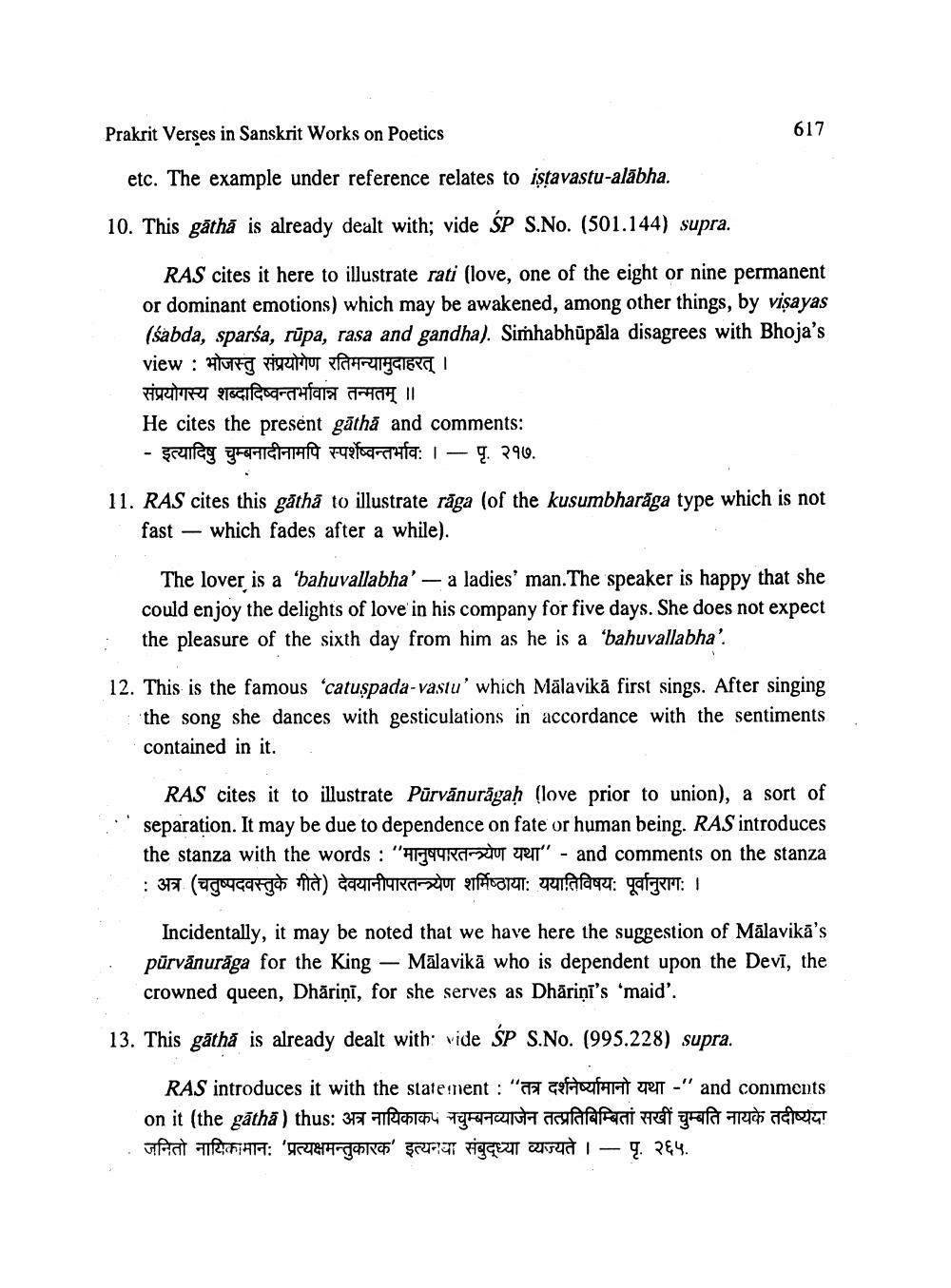________________
Prakrit Verses in Sanskrit Works on Poetics
617
etc. The example under reference relates to iştavastu-alābha.
10. This gātha is already dealt with; vide ŚP S.No. (501.144) supra.
RAS cites it here to illustrate rati (love, one of the eight or nine permanent or dominant emotions) which may be awakened, among other things, by visayas (sabda, sparsa, rūpa, rasa and gandha). Simhabhūpāla disagrees with Bhoja's view : Og vittor faHHGIERCI संप्रयोगस्य शब्दादिष्वन्तर्भावान्न तन्मतम् ॥ He cites the present gātha and comments: - scule Y-HIGHHH Ffoarstufa: 1 — 9. 290.
11. RAS cites this gāthā to illustrate rāga (of the kusumbharāga type which is not
fast - which fades after a while).
The lover is a 'bahuvallabha' – a ladies' man. The speaker is happy that she could enjoy the delights of love' in his company for five days. She does not expect the pleasure of the sixth day from him as he is a 'bahuvallabha'.
12. This is the famous 'catuspada-vastu' which Mālavikā first sings. After singing
the song she dances with gesticulations in accordance with the sentiments contained in it. .
RAS cites it to illustrate Pūrvānurāgah (love prior to union), a sort of separation. It may be due to dependence on fate or human being. RAS introduces the stanza with the words : "H1949 Ratasetos rei" - and comments on the stanza : अत्र (चतुष्पदवस्तुके गीते) देवयानीपारतन्त्र्येण शर्मिष्ठाया: ययातिविषय: पूर्वानुराग: ।
Incidentally, it may be noted that we have here the suggestion of Mālavikā's pūrvānurāga for the King – Mālavikā who is dependent upon the Devī, the crowned queen, Dhäriņi, for she serves as Dhāriņi's 'maid'.
13. This gātha is already dealt with: vide ŚP S.No. (995.228) supra.
RAS introduces it with the statement : " Chaofanit RT-" and comments on it (the gatha) thus: अत्र नायिकाकप नचुम्बनव्याजेन तत्प्रतिबिम्बितां सखीं चम्बति नायके तदीष्यया . fiat TRECHT: 'Uh oh UFS FIQÇEzt arudi - 9. P&4.




